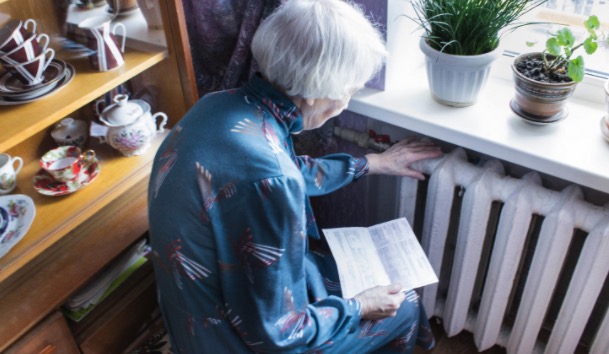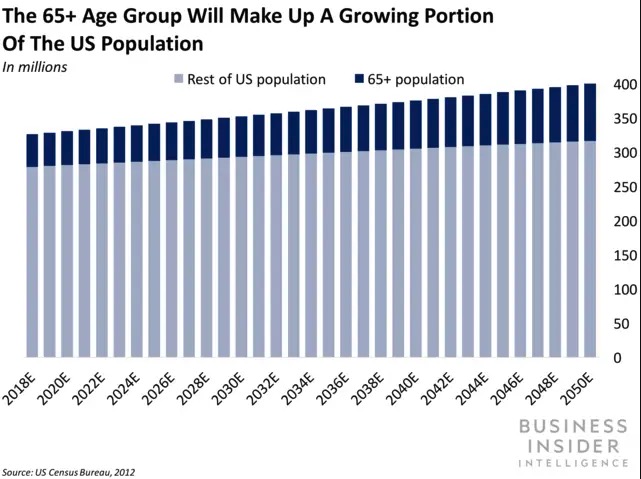
Elder abuse is a depressing reality. The elderly are some of the most helpless individuals in our communities…
Making them easy targets for people who wish them harm.
In general, elder abuse comes in many different forms. Whether it be physical abuse, emotional abuse, exploitation, or neglect, the statistics will vary depending on the abuse form.
Abuse of the elderly can be either a single or repeated act.
(or lack of action).
That occurs when there is a relationship or expectation of trust. This type of violence is a violation of human rights, and unfortunately is growing as people live longer…
And the elderly population continues to grow.
In fact, the global population of people aged 60 years and older will more than double, from 900 million in 2015 to over 2 billion in 2050.
Those who have an elder individual in their life should be aware of the signs of elder abuse and prevention tactics.
Page Contents:
Elder abuse can occur in any setting, but it is especially prevalent in community settings. The highest rates of elder abuse occur in institutions where relatives and family members are not around on a day-to-day basis, which leaves seniors more vulnerable.
Common institutions where abuse occurs include:

Unfortunately…
Many cases of institutional elder abuse are not reported, so it is likely that it is far more common in institutions than current data shows.
According to the World Health Organization, 2 out of 3 staff members in nursing homes admitted to having abused elders in the past year.
That is a staggering statistic. Staff members (other than relatives) are seen as the most trusted individuals by the elderly, so it’s unsettling that staff members are also labeled as the biggest perpetrators.
Older adults are vulnerable to abuse for several reasons. To begin with, many elderly individuals are on their own, not everyone has family or friends who are concerned with their well-being.
This makes them an easy target because the abuser likely knows that there is no one around to notice. The elderly are also less capable of handling their daily tasks, like managing their money, as they once were.
These tasks are entrusted to caregivers, who then have an easy opportunity to take advantage of the elderly individual. Many seniors also have cognitive issues, such as dementia, and are incapable of defending themselves or addressing abuse that is happening to them.
Worldwide, it is estimated that likely 1 in 6 persons over the age of 60 experiences elder abuse.
Out of the major types of elder abuse, physical, sexual, psychological, neglect, abandonment, financial, self-neglect, the World Health Organization identified the most prevalent form of elder abuse worldwide to be psychological abuse.

Examples of psychological abuse are verbal threats, forced isolation, and more. Elder abuse is a global issue that has seen significant growth in the past decade and is continuing to worsen.
Note: Though elder abuse is prevalent in America, it’s not one of the worst countries out there.
For example, Croatia and China have the highest percentage of abused elderly. In Croatia, a staggering 61% of the elderly population is documented as having experienced abuse, China is below that at 36%.
Sadly, the most common abusers of the elderly are family members. This can be due to stress that the elderly individual places on the caregiver. Family members are more likely to be perpetrators due to a cycle of violence, drug addiction, and more.
Although family members are the most common abusers, anyone can abuse the elderly, including nursing home staff. Studies have shown that a large percentage of long-term caregivers have witnessed or initiated abuse against the elderly.
In a 2,000 person study of nursing home residents, only 5% had never experienced abuse in the facility.
To prevent elder abuse, it can be helpful to keep the elderly involved in the community. When the elderly have friendships and are not lonely, they are less vulnerable to abuse.
It is also important to reach out to both the individual and the caregiver frequently to check-in.
Institutions and families should avoid hiring caregivers to exhibit any of the following:
If you have an elderly individual in your life who you are concerned for, call and visit them frequently. If any suspicious activity is seen, report it immediately.
It is everyone’s responsibility to care for the vulnerable members of their community and ensure that caregivers of the vulnerable are held to a standard of integrity and safety.
Other Critical Elder Abuse Facts
We referenced above that elder abuse is extremely underreported. In fact, the most recent estmate claimed that 1 in 24 cases of elder abuse is reported. Although accurate data is limited, as more channels of reporting have come to light, many government organizations are working to share and compile more data.
This represents a collaboration between the World Health Organization and the National Institute on Aging.
Elderly women are more likely to suffer from abuse than men, according to the National Institute of Health. This is in line with instances of abuse outside of the elderly, but in general women are almost 5 times more likely to be abused over men.

Unfortunately, elderly women are also less likely to report a case of abuse when it occurs. This is because women are typically more cognizant of the family dynamic and are worried about upsetting friends and family by bringing up abuse.
In 2017 it was estimated that 1.2 million seniors across America needed home care. By 2030, this number is expected to increase to 1.9 million.
(Source: Population Reference Bureau).
With the improvement in medical care, humans are continuing to live longer, which only means more stress on America’s nursing home infrastructure. With more residents entering nursing homes, overcrowding has become a big issue.
More residents and overcrowding leads to less oversight by upper levels of management. With less oversight you’re allowing staff members to act more freely to do things they shouldn’t, such as abusing residents.
Also here is a breakdown of how the elderly population is growing. (Those who will likely utilize some sort of home care).

Below is a quick breakdown on abuse form by prevalence from the WHO fact sheet.
Abusive acts can include any of the following:
Risk factors that can increase the likelihood of abuse can be identified at different levels.
These include individual, relationship, community, and socio-cultural.
Let’s break these down.
Individual:
Risks at the individual level will vary between the victim and the abuser.
Victim – poor physical and mental health.
Abuser – Mental disorders, alcohol addiction, or substance abuse.
Other individual factors include the gender of the victim. Women are typically at higher risk of neglect and financial abuse (such as a family member seizing their property) once they are widowed.
Relationship:
A shared living situation with 2 or more individuals can be a risk factor for abuse of the elderly. Though it’s not yet clear whether spouses or adult children are more likely to be perpetrators…
Note: In some cases, a long history of poor family relationships can get worse, due to the added tension of an older person becoming more dependent, and less able to take care of themselves.
Community:
Humans are inherently social beings, and this need for social interaction doesn’t go away when you get old. A lack of social support can accelerate mental and physical deterioation, leaving one more vulnerable to abuse.

Socio-cultural:
Stereotypes and other social stigma can affect the risk of elder abuse. This can include the natural divide between generations and family, an unbalanced distribution of power, or issues of inheritance.
If you or a family member has been suffering from abuse or neglect in a nursing home, long-term care facility, or skilled nursing facility, you could be eligible for financial compensation. We can connect with you with nursing home abuse attorneys that will fight to get the maximum compensation for your unique situation.
Get in touch with us for your free consultation! A lawyer will be in touch soon to discuss and evaluate your potential case.
There are no fees unless you win your case. Call us at (855) 344-1017 today!